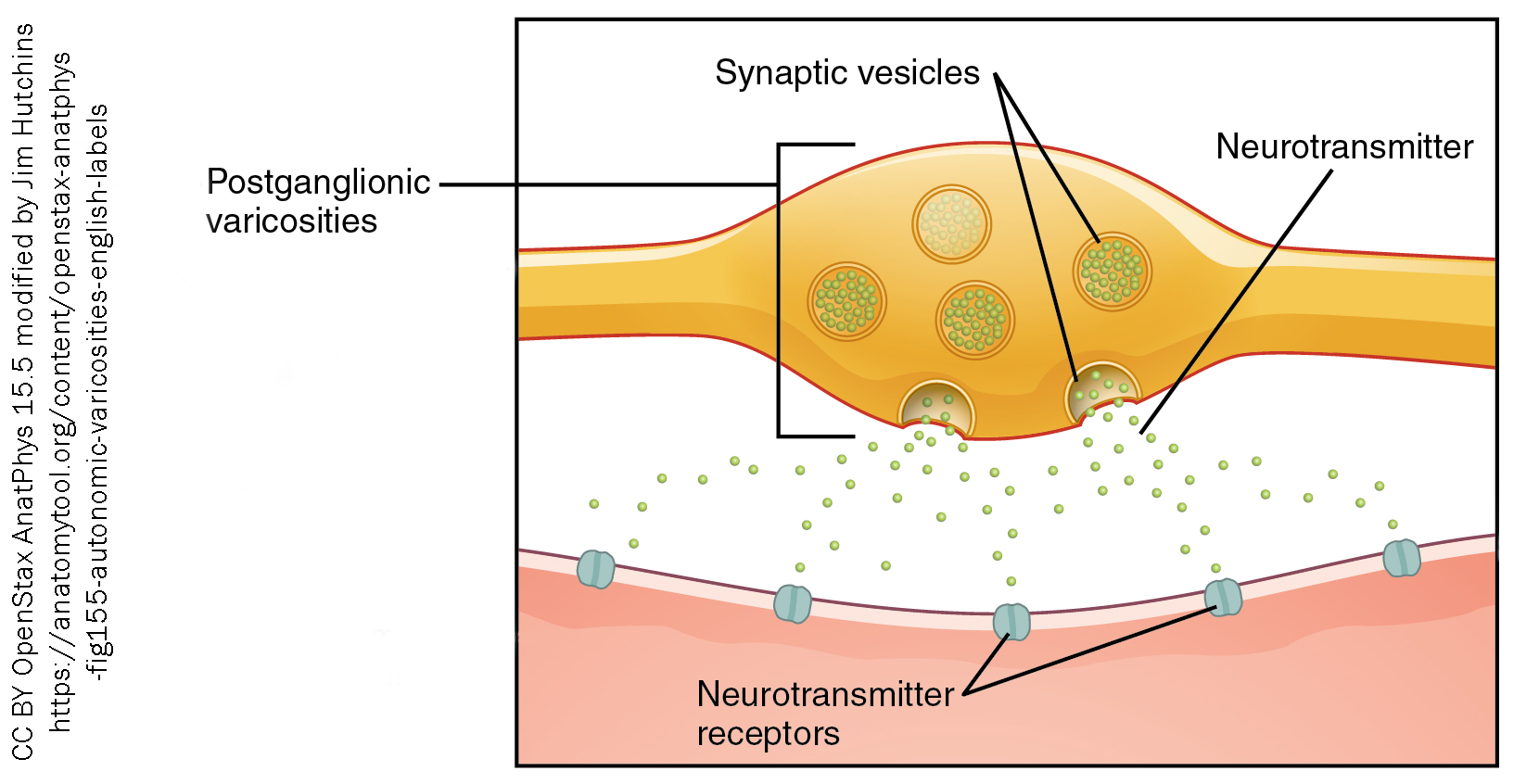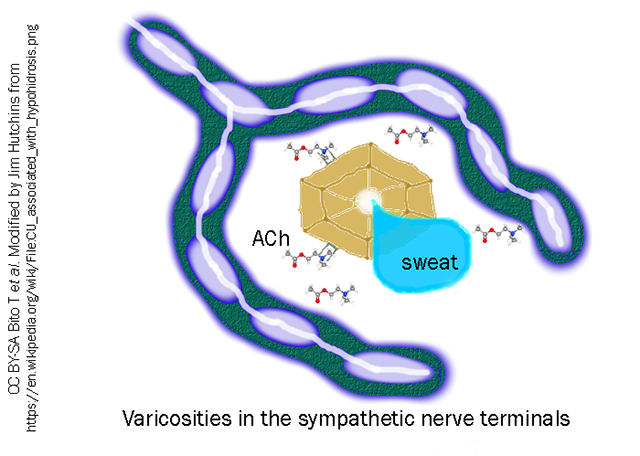Perspiration
Jim Hutchins
Objective 11: Explain how the autonomic nervous system regulates perspiration.
Autonomic Control of Perspiration
Perspiration (sweating) is primarily a function of activity in the sympathetic nervous system. This is in keeping with the classical view of the sympathetic nervous system as a “fight or flight” system, since muscular activity produces heat which must be dissipated by dilation of the skin blood vessels and by sweating.
Synapses in the Sympathetic Nervous System Are Found on Varicosities, Not Axon Terminals

Unlike in many other parts of the nervous system, in the autonomic nervous system, neurotransmitters are not released from conventional-looking presynaptic nerve terminals. Rather, a long postganglionic nerve fiber has swellings along its length, and the neurotransmitter is released from these varicosities.

One weird thing about the sympathetic control of perspiration is that the neurotransmitter released is not norepinephrine, but rather acetylcholine. Of course, we usually think of acetylcholine as being released from parasympathetic nerve terminals.
The glands innervated are eccrine sweat glands, the glands of the skin that produce a watery secretion with added salt.
The receptors found on eccrine sweat glandular cells are of the M3 muscarinic type. The increase in intracellular calcium causes the glandular cells to secrete perspiration.
Horner Syndrome
In the neurological condition called Horner Syndrome, the sympathetic nerve fibers which control sweating for the face are disrupted, and half the face is incapable of producing sweat (anhidrosis). Sympathetic neuron cell bodies are found in the medulla, and they send long postganglionic axons to the skin of the face, traveling via the network of blood vessels.
Media Attributions
- fig07-anatomy-of-the-human-eye-retina-and-related-structures
- m3 muscarinic receptor © Jim Hutchins | BioRender is licensed under a CC BY-NC-ND (Attribution NonCommercial NoDerivatives) license


